|
Books Should Be Free Loyal Books Free Public Domain Audiobooks & eBook Downloads |
|
|
Books Should Be Free Loyal Books Free Public Domain Audiobooks & eBook Downloads |
|
Non-fiction |
|---|
|
Book type:
Sort by:
View by:
|
By: Ellery Clark Gregg (1899-) | |
|---|---|
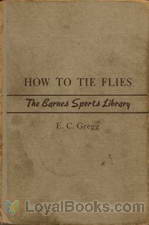 How to Tie Flies
How to Tie Flies
| |
By: Ellis Parker Butler (1869-1937) | |
|---|---|
 Confessions of a Daddy
Confessions of a Daddy
The wry humor of Ellis Parker Butler, who gave us the classic Pigs Is Pigs, takes us into his own married life where Marthy and Hiram live quietly in their Colorado town. They don't have trouble with anyone of their neighbors. Why should they, as they don't have any kids that could cause the neighbors trouble? And oh, luckily they don't have kids because how could Hiram otherwise afford to give his wife, Marthy a new silk dress? Really lucky. The neighbors kids are cute and all but ugh, they are much better off without kids and their expenses and sicknesses and trouble... | |
By: Ellwood Patterson Cubberley (1868-1941) | |
|---|---|
 The History of Education; educational practice and progress considered as a phase of the development and spread of western civilization
The History of Education; educational practice and progress considered as a phase of the development and spread of western civilization
| |
By: Elsie Lincoln Benedict | |
|---|---|
 How to Analyze People on Sight Through the Science of Human Analysis: The Five Human Types
How to Analyze People on Sight Through the Science of Human Analysis: The Five Human Types
In this popular American book from the 1920s, accomplished public speaker and self-help charlatan Elsie Lincoln Benedict outlines her pseudo-scientific system of "Human Analysis". She proposes that, within the human race, five sub-types have developed through evolutionary processes, each with its own distinct character traits and corresponding outward appearance. She offers to teach the reader how to recognise these five types of people and understand their innate differences. Her ideas have never been taken seriously by the scientific community, but this book is considered a classic within its genre and remains in print today. Summary by Carl Manchester. | |
By: Emily Burbank (?-?) | |
|---|---|
 Woman as Decoration
Woman as Decoration
A guide for women to complement their dress to their surroundings, be it in their own home, on outings or on stage. Please note that there is a separate chapter with the captions of the fashion plates which can be found in the online text. | |
By: Emily Post (1873-1960) | |
|---|---|
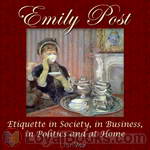 Etiquette in Society, in Business, in Politics and at Home
Etiquette in Society, in Business, in Politics and at Home
“Many who scoff at a book of etiquette would be shocked to hear the least expression of levity touching the Ten Commandments...” Thus opens the introduction to one of the most popular American non-fiction books – one that was avidly studied by both men and women, children and adults, leaders of society and those who yearned to be part of the charmed circle! Etiquette in Society, in Business, in Politics and at Home by Emily Post was first published in 1922 and became an instant bestseller... | |
By: Emma Goldman (1869-1940) | |
|---|---|
 Anarchism and Other Essays
Anarchism and Other Essays
Chicago, May 4, 1886. In the Haymarket region of the city, a peaceful Labor Day demonstration suddenly turns into a riot. The police intervene to maintain peace, but they soon use violence to quell the mob and a bomb is thrown, resulting in death and injuries to scores of people. In the widely publicized trial that followed, eight anarchists were condemned to death or life imprisonment, convicted of conspiracy, though none of them had actually thrown the bomb. A young Russian immigrant, Emma Goldman, had arrived just the previous year in the United States... | |
By: Emmett J. Scott (1873-1957) | |
|---|---|
 Booker T. Washington Builder of a Civilization
Booker T. Washington Builder of a Civilization
| |
By: Enos A. Mills (1870-1922) | |
|---|---|
 Wild Life on the Rockies
Wild Life on the Rockies
“This book contains the record of a few of the many happy days and novel experiences which I have had in the wilds. For more than twenty years it has been my good fortune to live most of the time with nature, on the mountains of the West. I have made scores of long exploring rambles over the mountains in every season of the year, a nature-lover charmed with the birds and the trees. On my later excursions I have gone alone and without firearms. During three succeeding winters, in which I was a Government Experiment Officer and called the “State Snow Observer,” I scaled many of the higher peaks of the Rockies and made many studies on the upper slopes of these mountains.” | |
By: Epictetus (c.55-135) | |
|---|---|
 The Enchiridion
The Enchiridion
Epictetus (Greek: Επίκτητος; c.55–c.135) was a Greek Stoic philosopher. The name given by his parents, if one was given, is not known – the word epiktetos in Greek simply means “acquired.” Epictetus spent his youth as a slave in Rome to Epaphroditos, a very wealthy freedman of Nero. Even as a slave, Epictetus used his time productively, studying Stoic Philosophy under Musonius Rufus. He was eventually freed and lived a relatively hard life in ill health in Rome. So far as is known, Epictetus himself wrote nothing... | |
 The Golden Sayings of Epictetus
The Golden Sayings of Epictetus
Aphorisms from the Stoic Greek. | |
By: Ernest Baynes (1868-1925) | |
|---|---|
 Wild Bird Guests
Wild Bird Guests
How to entertain them; with chapters on the destruction of birds, their economic and aesthetic values, suggestions for dealing with their enemies and on the organization and management of bird clubs. - book subtitle. Note: Because of its length and complexity, Mr. Kennard's "sub-chapter" in Chapter 8 entitled "Trees, Shrubs, and Vines Attractive to Birds" has been omitted, but of course is available at the Gutenberg address for this work. | |
By: Ernest Gallaudet Draper (1885-1954) | |
|---|---|
 Lectures in Navigation
Lectures in Navigation
| |
By: Ernest Shackleton | |
|---|---|
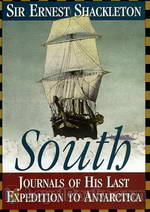 South! The Story of Shackleton's Last Expedition 1914-1917
South! The Story of Shackleton's Last Expedition 1914-1917
The expedition was given the grand title of The Imperial Trans-Antarctic Expedition. Due to be launched in 1914, two ships were to be employed. The first, the lead vessel, fittingly named the Endurance was to transport the team to the Weddell Sea from where the great explorer Ernest Shackleton and five others would cross the icy wastes of Antarctica on foot. The second ship, the Aurora was to approach the continent from the other side and put down supplies at various points to help the explorers... | |
By: Ernst Haeckel (1834-1919) | |
|---|---|
 Riddle of the Universe
Riddle of the Universe
The Riddle of the Universe is the philosophical work of Ernst Haeckel, eminent biologist, in which he explores the meaning of life, the nature of reality, and the connection between physiology and thought. | |
By: Ernst Heinrich Philipp August Haeckel (1834-1919) | |
|---|---|
 Freedom in Science and Teaching. from the German of Ernst Haeckel
Freedom in Science and Teaching. from the German of Ernst Haeckel
| |
By: Errico Malatesta (1853-1932) | |
|---|---|
 Anarchy
Anarchy
Anarchy explained by the anarchist Errico Malatesta. | |
By: Estelle M. Hurll (1863-1924) | |
|---|---|
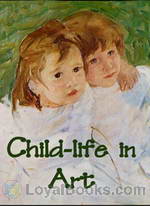 Child-life in Art
Child-life in Art
The poetry of childhood is full of attractiveness to the artist, and many and varied are the forms in which he interprets it. The Christ-child has been his highest ideal. All that human imagination could conceive of innocence and purity and divine loveliness has been shown forth in the delineation of the Babe of Bethlehem. The influence of such art has made itself felt upon all child pictures. It matters not whether the subject be a prince or a street-waif; the true artist sees in him something which is lovable and winning, and transfers it to his canvas for our lasting pleasure. | |
By: Esther Singleton (1865-1930) | |
|---|---|
 Flowers of Shakespeare
Flowers of Shakespeare
A lovely collection of information about those flowers that appear in William Shakespeare's work. The brief chapters are categorized by the four seasons in which the flowers first appear. - Summary by KevinS | |
By: Ethel Hueston (1887-1971) | |
|---|---|
 Leave it to Doris
Leave it to Doris
The Reverend Mr. Artman is a widower of three years and is worried he might not be able to escape the clutches of Miss Carlton, his housekeeper, much longer. Luckily, if he dismisses her from his employ, he has Doris and three other daughters to run his household. | |
By: Ethel J. Rosenberg (1858-1930) | |
|---|---|
 A Brief Account of the Bahai Movement
A Brief Account of the Bahai Movement
“Many believe that we, in this century,” writes Ethel Rosenberg, “ are witnessing the dawn of a new spiritual epoch or era. A renewal of the Spirit is making itself felt in the Churches and in the religious and social life of all lands. This is in harmony with the teachings of the Bahais, and of their Great Leaders, now represented by Abdul Baha the ‘Servant of God,’ known to the outside world as Abbas Effendi. Once again, the Light is shining forth from that land which may indeed be called... | |
By: Ethel M. Mairet | |
|---|---|
 Vegetable Dyes Being a Book of Recipes and Other Information Useful to the Dyer
Vegetable Dyes Being a Book of Recipes and Other Information Useful to the Dyer
| |
By: Ethel Rose Peyser (1887-1961) | |
|---|---|
 Cheating the Junk-Pile — The Purchase and Maintenance of Household Equipments
Cheating the Junk-Pile — The Purchase and Maintenance of Household Equipments
This book of advice about the purchase and care of household appliances is intended to cheat the junk-pile by inspiring the buyer to get the utmost advantage out of every purchase thru wise buying and proper care of equipment after it is acquired. The book explains what the householder needs to know about the practical home use of electricity, about such modern appliances as electric washing machines and vacuum cleaners., about electric, gas, and oil stoves, heating and ventilation, kitchen furnishings, water supply, lighting, fire prevention, etc. - Summary by Book review digest, 1923 | |
By: Eugene Edward Hall (1849-1926) | |
|---|---|
 Treatise on Staff Making and Pivoting
Treatise on Staff Making and Pivoting
This instruction manual contains complete directions for making and fitting new staffs for watches from raw material. The author refers to several illustrations throughout the text. These can be seen at the Online text in the Links section on this page. (Bev J. Stevens) | |
By: Eugene Field (1850-1895) | |
|---|---|
 The Love Affairs of a Bibliomaniac
The Love Affairs of a Bibliomaniac
Do you love books? No, I mean REALLY love books? These series of sketches on the delights, adventures, and misadventures connected with bibliomania (bibliomania is characterized by the collecting of books which have no use to the collector nor any great intrinsic value to a genuine book collector. The purchase of multiple copies of the same book and edition and the accumulation of books beyond possible capacity of use or enjoyment are frequent symptoms of bibliomania.). The author wholeheartedly enjoyed this pursuit all his life and his descriptions are delightful to read... | |
By: European Union | |
|---|---|
 The Treaty of the European Union, Maastricht Treaty, 7th February, 1992
The Treaty of the European Union, Maastricht Treaty, 7th February, 1992
| |
By: Eusebius of Caesarea (263-339 AD) | |
|---|---|
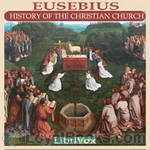 Eusebius' History of the Christian Church
Eusebius' History of the Christian Church
Eusebius presents the history of the Church from the apostles to his own time, with special regard to the following points:1. the successions of bishops in the principal sees2. the history of Christian teachers3. the history of heresies4. the history of the Jews5. the relations to the heathen6. the martyrdoms. | |
By: Eva K. Betz (1897-1968) | |
|---|---|
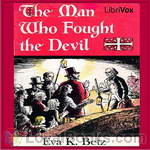 The Man Who Fought the Devil
The Man Who Fought the Devil
Jean Marie Vianney always found it hard to learn. In fact, he made history by receiving a zero as his examination mark after his first year of study in the seminary. But with determination, and with God’s help, he won through. He became a hard-working parish priest and then a pastor – the beloved Cure of Ars.Week by week, year by year, his fame as an advisor and a confessor grew. People flocked from great distances to his little church, and privately, among themselves, they called him “saint”... | |
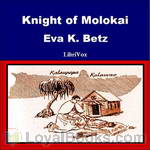 Knight of Molokai
Knight of Molokai
Hurricane! Volcano eruptions and fire! Leprosy! Nothing deterred Father Damien from doing the work to which he had been called. Outstandingly big and strong as a boy, he was notably kind as a young man. He needed all his strength and kindness when he went to live at the leper colony of Molokai.This children’s biography of Father Damien of Molokai was written by Eva K. Betz, a prolific Catholic writer of history and biography books for children. (Introduction from an original dust jacket and Maria Therese) | |
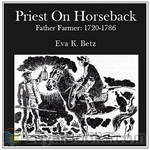 Priest on Horseback - Father Farmer: 1720 - 1786
Priest on Horseback - Father Farmer: 1720 - 1786
A historical novel for children, which tells the story of several months in the life of the then famous Father Farmer, as he traveled a Mass circuit in Pre-Revolutionary, Colonial America. He faced much danger and and adventure, in order to provide the Mass and the Sacraments to Catholics who had not seen a priest in years.Father Farmer was a real life missionary priest during the 1700’s in what is now New England. In 1779 he was appointed as one of the first trustees of the University of Pennsylvania. He also had a reputation as a philosopher and astronomer in his time, and was a member of the American Philosophical Society. (Introduction by Maria Therese)No on-line text available. | |
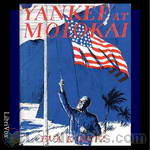 Yankee at Molokai
Yankee at Molokai
As a daring soldier in the Union Army, Ira Dutton earned the respect and affection of the men around him. Handsome and affable, he could have had a full social life when the war was over. But he felt that his "wild years" demanded atonement - and where could that better be found than in Molokai, where the ailing Father Damien needed help?So he made a free gift of himself, his strength and his capacity for love. Deeply patriotic, he cultivated in his charges devotion to America. A vivid exciting story. | |
 The Quiet Flame
The Quiet Flame
“You will never be a leper nor will any Sister of our Order.”The amazing promise was made by Mother Marianne of Molokai, the “Quiet Flame” of the this title who, as a Sister of St. Francis , spent 30 years on that island helping lepers during and after the time of Father Damien.Mother was speaking to a young nun, and she spoke the truth. Not one of the Sisters ever did contract the disease, a notable fact considering the tender care they fostered on the lepers.This story of this good nun, was written by the author of a number of Catholic biographies and fiction books for children. | |
By: Eva March Tappan (1854-1930) | |
|---|---|
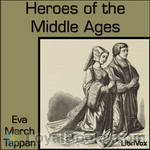 Heroes of the Middle Ages
Heroes of the Middle Ages
“The object of this book is to bring together stories of the most important movements in the history of Europe during the Middle Ages, and to make familiar the names of the most important figures in those scenes. I have endeavoured to weave a tapestry in which, with due colour, may be traced the history of the rise and fall of the various nationalities and the circumstances and mode of life of each—in short, to give the young reader an approximation to the background for the study of his country’s history which a wide reading gives to a man.” | |
 Makers of Many Things
Makers of Many Things
How are friction matches made? How do rags and trees become paper? Who makes the dishes on our tables? Published in 1916, this children's book explains the origins of everyday items in an entertaining and informative way. There are plenty of illustrations, so please feel free to read along. | |
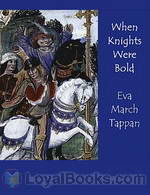 When Knights Were Bold
When Knights Were Bold
This book is in no degree an attempt to relate the involved and intricate history of the Middle Ages. Its plan is, rather, to present pictures of the manner of life and habits of thought of the people who lived between the eighth and fifteenth centuries. Our writings and our everyday conversation are full of their phrases and of allusions to their ideas. Many of our thoughts and feelings and instincts, of our very follies and superstitions, have descended to us from them. To become better acquainted with them is to explain ourselves. | |
 World’s Story Volume III: Egypt, Africa and Arabia
World’s Story Volume III: Egypt, Africa and Arabia
This is the third volume of the 15-volume series of The World’s Story: a history of the World in story, song and art, edited by Eva March Tappan. Each book is a compilation of selections from prose literature, poetry and pictures and offers a comprehensive presentation of the world's history, art and culture, from the early times till the beginning of the 20th century. Topics in Part III include Egypt, Northern, Western and Central Africa, South Africa and Arabia. - Summary by Sonia Cast list for The Death of Cleopatra: Dolabella: Tomas Peter Charmian: Monika M... | |
By: Evans, A. J. (1889-1960) | |
|---|---|
 The Escaping Club
The Escaping Club
Described by some as one of the greatest escape books published. The Escaping Club recounts Evans' escape to Switzerland from a supposedly "escape-proof" German prison camp during World War I. After repatriation and rejoining the war, Evans again finds himself captured, this time first by Arabs and then by Turks. He again manages to escape. A detailed look at the trials faced by Allied POWs during World War I. | |
By: Evelyn Baring Cromer (1841-1917) | |
|---|---|
 Political and Literary essays, 1908-1913
Political and Literary essays, 1908-1913
| |
By: Evelyn Charles Vivian (1882-1947) | |
|---|---|
 A History of Aeronautics
A History of Aeronautics
| |
By: Evelyn Underhill (1875-1941) | |
|---|---|
 Mysticism: A Study in Nature and Development of Spiritual Consciousness
Mysticism: A Study in Nature and Development of Spiritual Consciousness
The book provides an introduction to the subject of mysticism, presenting it from the point of view of metaphysics, psychology, and symbolism. It examines the different stages of development a mystic typically experiences. | |
 The Life of the Spirit and the Life of Today
The Life of the Spirit and the Life of Today
Underhill emphasizes the practical, here-and-now nature of spiritual life. She argues that spirituality is a genuine and abiding human fact, and that any complete description of human life must find room for the spiritual factor, and for the religious life in which it finds expression. | |
By: Ezra Meeker (1830-1928) | |
|---|---|
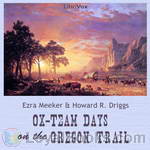 Ox-Team Days on the Oregon Trail
Ox-Team Days on the Oregon Trail
Ezra Meeker…was an early pioneer who traveled the Oregon Trail by ox cart as a young man. Beginning in his 70s, he worked tirelessly to memorialize the trail, repeatedly retracing the trip of his youth. This book is a memoir of those days. | |
By: F. (Fulgence) Marion | |
|---|---|
 Wonderful Balloon Ascents
Wonderful Balloon Ascents
| |
By: F. H. (Franklin Hiram) King (1848-1911) | |
|---|---|
 Farmers of Forty Centuries; Or, Permanent Agriculture in China, Korea, and Japan
Farmers of Forty Centuries; Or, Permanent Agriculture in China, Korea, and Japan
| |
By: F. J. Foakes-Jackson (1855-1941) | |
|---|---|
 Social Life in England 1750-1850
Social Life in England 1750-1850
In 1916, the Cambridge historian, F.J. Foakes-Jackson braved the wartime Atlantic to deliver the Lowell Lectures in Boston. In these wide-ranging and engaging talks, the author describes British life between 1750-1850. There are John Wesley's horseback peregrinations over thousands of miles of English countryside. Next, Foakes-Jackson introduces the mordant rural poet, George Crabbe, who began life as a surgeon apothecary and ended up as a parish rector who made house calls. He gives us a female convict, assorted Cambridge University dons, Regency fops and rakes, and Victorian slices of life from Dickens and Thackeray... | |
By: Fabian Franklin | |
|---|---|
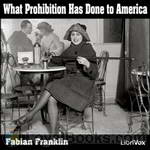 What Prohibition Has Done to America
What Prohibition Has Done to America
In What Prohibition Has Done to America, Fabian Franklin presents a concise but forceful argument against the Eighteenth Amendment of the U.S. Constitution. Beginning in 1920, this Amendment prohibited the sale and manufacture of alcoholic beverages in the United States, until it was repealed in 1933. Franklin contends that the Amendment “is not only a crime against the Constitution of the United States, and not only a crime against the whole spirit of our Federal system, but a crime against the first principles of rational government... | |
By: Fannie Hardy Eckstorm (1865-1946) | |
|---|---|
 The Woodpeckers
The Woodpeckers
The Woodpeckers is a wonderful introduction to the world of bird study for the young naturalist, covering such topics as how he finds food, courting, how he builds his nest, the interesting ways he uses his different body parts as tools, among other topics discussed in the book. If you wish to investigate further, the book has a few diagrams and an Appendix that contains more technical information such as detailed descriptions of the different species of North American woodpeckers which were not read as part of this audiobook. | |
By: Fanny Dickerson Bergen (1846-1924) | |
|---|---|
 Current Superstitions
Current Superstitions
No matter how enlightened, chances are you’ve been raised around superstitious lore of one kind or another. Fanny Dickerson Bergen was one of the original researchers of North American oral traditions relating to such key life events and experiences as babyhood and childhood, marriage, wishes and dreams, luck, warts and cures, death omens and mortuary customs, and “such truck,” as Huck Finn would say. You’ll be surprised at how many of these old saws you’ll know. Here’s a quote from... | |
By: Father Benoit Valuy (1808-1869) | |
|---|---|
 Fraternal Charity
Fraternal Charity
This short treatise comes from a work by the Roman Catholic priest Father Valuy, S.J., and bears an imprimatur. It was written for members of religious orders; yet, as the translator notes, it may be of interest to others, for "love, the sunshine of existence, is wanted everywhere." The first five chapters cover the fundamentals of fraternal charity. Chapters 6 through 17 discuss twelve characteristics of fraternal charity. Chapters 18 and 19 show how God manifests the virtue of charity to us most perfectly... | |
By: Fearing Burr | |
|---|---|
 The Field and Garden Vegetables of America Containing Full Descriptions of Nearly Eleven Hundred Species and Varietes; With Directions for Propagation, Culture and Use.
The Field and Garden Vegetables of America Containing Full Descriptions of Nearly Eleven Hundred Species and Varietes; With Directions for Propagation, Culture and Use.
| |
By: Ferdinand Ossendowski (1876-1945) | |
|---|---|
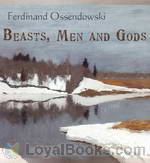 Beasts, Men and Gods
Beasts, Men and Gods
“Beasts, Men and Gods” is an account of an epic journey, filled with perils and narrow escapes, in the mold of “The Lord of the Rings.”The difference is: it’s all true.Ferdinand Ossendowski was a Pole who found himself in Siberia and on the losing side during the Bolshevik Revolution. To escape being rounded up and shot, he set out with a friend to reach the Pacific, there to take ship back to Europe. During his journey he fell in with dozens of other military men who shared the same objective… but nearly every one of them perished on the way... | |
By: Ferrar Fenton Bible (1832-1920) | |
|---|---|
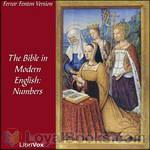 Numbers (FFB)
Numbers (FFB)
The record of the numbering of the nation of Israel, as well as the beginning of their "maturity" as they near the "promised land" of Canaan. (Introduction by Mark Penfold) | |
By: Ferreol Girardey (1839-1930) | |
|---|---|
 Prayer: Its Necessity, Its Power, Its Conditions
Prayer: Its Necessity, Its Power, Its Conditions
Redemptorist Father Ferreol Girardey's book, which bears an imprimatur, is a broad introductory treatise on the subject of prayer. He discusses the power and necessity of prayer, explains why some prayers do not seem to be answered, and tells us how to make our prayers more acceptable to God. In particular, he instructs the reader on what to pray for and for whom to pray. He also details the conditions necessary for efficacious prayer and explains the times when it is most suitable to pray. Father Girardey includes numerous lessons from the gospel on prayer and offers selections from Meditations for Every Day of the Year by Redemptorist Father Louis Bronchain. | |
By: First Unitarian Society of San Francisco. Society for Christian Work | |
|---|---|
 The Cookery Blue Book
The Cookery Blue Book
| |
By: Flavius Josephus (37 - c.100) | |
|---|---|
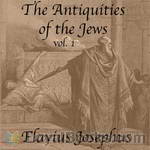 The Antiquities of the Jews
The Antiquities of the Jews
Antiquities of the Jews was a work published by the important Jewish historian Flavius Josephus about the year 93 or 94. It is a history of the Jewish people, written in Greek for Josephus' gentile patrons. Beginning with the creation of Adam and Eve, it follows the events of the historical books of the Hebrew Bible, but sometimes omits or adds information.Volume 1 contains Books 1-5 and ends with the dedication of Samuel and death of Eli the priest. | |
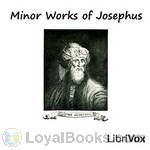 Minor Works of Josephus
Minor Works of Josephus
There are 3 parts to this collection.(1) Against Apion is a two-volume defense of Judaism as classical religion and philosophy, stressing its antiquity, as opposed to what Josephus claimed was the relatively more recent tradition of the Greeks. Some anti-Judean allegations ascribed by Josephus to the Greek writer Apion, and myths accredited to Manetho are also addressed.(2) Discourse To The Greeks Concerning Hades describes the author's views on the afterlife against the prevailing view of the "Greeks" (i... | |
By: Flavius Philostratus | |
|---|---|
 The Life of Apollonius of Tyana
The Life of Apollonius of Tyana
Apollonius of Tyana (ca. 40-120 AD) was a Greek Pythagorean philosopher and teacher. He hailed from the town of Tyana in the Roman province of Cappadocia in Asia Minor. His date of birth is a matter of conjecture as some say he was roughly a contemporary of Jesus.After Apollonius' death his name remained famous among philosophers and occultists. In a "novelistic invention" inserted in the Historia Augusta, Aurelian, at the siege of Tyana in 272, was said to have experienced a visionary dream in which Aurelian claimed to have seen Apollonius speak to him, beseeching him to spare the city of his birth... | |
By: Fleming Mant Sandwith (1853-1918) | |
|---|---|
 Sleeping Sickness
Sleeping Sickness
In the twenty-first century sleeping sickness is still a life-threatening disease of adults and children and a hazard to tourists in East African game parks.The protozoan parasite is transmitted by the tsetse fly, a buzzing insect with reddish eyes and a large biting proboscis. In 1912, when this short monograph was written, physicians of the British Empire understood that trans-continental expeditions manned by infected African porters, had set off an epidemic of sleeping sickness that had claimed half a million lives... | |
By: Fletcher Manufacturing Company | |
|---|---|
 The Candy Maker's Guide A Collection of Choice Recipes for Sugar Boiling
The Candy Maker's Guide A Collection of Choice Recipes for Sugar Boiling
| |
By: Florence A. Merriam (1863-1948) | |
|---|---|
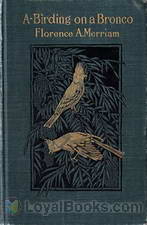 A-Birding on a Bronco
A-Birding on a Bronco
Florence Augusta Merriam Bailey (August 8, 1863 - September 22, 1948) was an American ornithologist and nature writer. She started observing bird behavior at a time when most bird study was based on collections and skins. By 1885, she began to write articles focusing on protecting birds. Her introduction of a birdwatching field guide, aimed at living birds, is considered the first in the tradition of modern bird guides. She wrote the first of these at the age of 26, initially as a series of notes in the Audubon Magazine and later as books. In "A-Birding on a Bronco," she writes an engaging memoir about her several trips to study birds on a ranch in California in the late 1800's. | |
By: Florence Converse (1871-1967) | |
|---|---|
 The Story of Wellesley
The Story of Wellesley
| |
By: Florence Daniel | |
|---|---|
 The Healthy Life Cook Book, 2d ed.
The Healthy Life Cook Book, 2d ed.
| |
By: Florence Hartley | |
|---|---|
 Ladies' Book of Etiquette, and Manual of Politeness
Ladies' Book of Etiquette, and Manual of Politeness
A guide for ladies, written in 1860, on what is accepted as correct behavior in polite society. The advice covers dress, travelling, staying in hotels, attending and giving parties and balls, making and receiving morning calls, letter writing, how to deal with servants, what accomplishments every well bred lady should be expected to acquire and how to choose a suitable husband. | |
By: Florence Kreisler Greenbaum | |
|---|---|
 The International Jewish Cook Book 1600 Recipes According to the Jewish Dietary Laws
The International Jewish Cook Book 1600 Recipes According to the Jewish Dietary Laws
| |
By: Florence Morse Kingsley (1859-1937) | |
|---|---|
 Neighbors
Neighbors
The final story featuring the inhabitants of the growing township of Innisfield: Mrs Philura Pettibone’s story reaches its long-awaited conclusion and Miss Malvina’s life is changed forever by the arrival of various ”fur’ners”. Published in 1917, with America’s entry into the war in Europe imminent, the story dwells on friendships, the melting- pot of nationalities that make up the USA, and the personal struggle between pacifism and patriotism in wartime. While the writing keeps its gently ironic style for most of the time, it also features more serious and sometimes rather melodramatic themes... | |
By: Florence Nightingale (1820-1910) | |
|---|---|
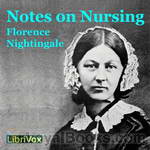 Notes on Nursing
Notes on Nursing
Notes on Nursing was published in 1859 and is a fascinating view into the theories underpinning the early development of modern nursing and public health reform by "the Lady with the Lamp", Florence Nightingale. Emphasising common sense and thought for the patient's care in many more ways than just administering physician-prescribed medicines, this is still a very relevant book for those interested in health or caring for the sick and infirm today.Summary by Cori Samuel. | |
By: Florence Scovel Shinn (1871-1940) | |
|---|---|
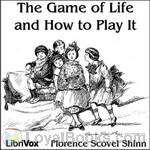 The Game of Life and How to Play It
The Game of Life and How to Play It
Florence Scovel Shinn, an illustrator living in New York City, became a teacher of New Thought after a divorce. New Thought was a movement which holds the belief that individuals can create their own reality through intentional thoughts and prayer, much like the current Law of Attraction movement. The Game of Life and How to Play It is her first book, and is remarkable for being written by a woman and meant for a genteel female audience. | |
By: Founding Fathers of the United States | |
|---|---|
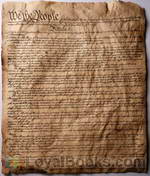 The Constitution of the United States of America, 1787
The Constitution of the United States of America, 1787
The Declaration of Independence was signed on July 4, 1776. It announced that the thirteen American colonies, who were at war with Great Britain in the American Revolutionary War, no longer considered themselves part of the British Empire. They now called themselves a new nation, The United States of America. This famous document went on to become a well-known keystone of the human rights movement. However, the newly formed state had no real identity or philosophy and were merely a loose collection of states that had freed themselves from colonial rule... | |
 The Declaration of Independence of the United States of America
The Declaration of Independence of the United States of America
Declaration of Independence is the document in which the Thirteen Colonies declared themselves independent of the Kingdom of Great Britain and explained their justifications for doing so. It was ratified by the Continental Congress on July 4, 1776. | |
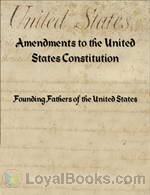 Bill of Rights & Amendments to the US Constitution
Bill of Rights & Amendments to the US Constitution
The Constitution has a total of 27 amendments. The first ten, collectively known as the Bill of Rights, were ratified simultaneously. The following seventeen were ratified separately. | |
By: Frances Alice Forbes (1869-1936) | |
|---|---|
 Saint Athanasius: The Father of Orthodoxy
Saint Athanasius: The Father of Orthodoxy
A short and rather old fashioned biography a great saint. Don't expect subtlety; it's unapologetic hagiography. The saint is presented as a figure of pristine brilliance, courage and integrity and his persecutors as conniving villains. But to those who appreciate what was at stake in the controversy, Athanasius is indeed a God-sent hero. This is an informative, if quaint, introduction to a fascinating figure in history. | |
By: Frances Anne Kemble (1809-1893) | |
|---|---|
 Journal of A Residence On A Georgian Plantation, 1838-1839
Journal of A Residence On A Georgian Plantation, 1838-1839
Fanny Kemble was a British actress who married mega-plantation owner, Pierce Butler of Georgia. During her marriage she kept journals of everyday life, and after some years grew to detest the institution of slavery and the things Butler stood for. Kemble eventually divorced him, but it wasn't until after the Civil War had started that she published her journal about her observations and the experiences of the hundreds of African American slaves owned by her ex-husband. | |
By: Frances Calderón de la Barca (1804-1882) | |
|---|---|
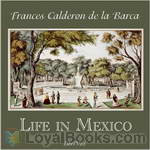 Life in Mexico
Life in Mexico
FRANCES CALDERON DE LA BARCA, born in Edinburgh, 1804, the daughter of William Inglis. After her father’s death she settled in America, where she married the Spanish diplomat, Don Angel Calderon de la Barca. She accompanied him on his various appointments to Mexico, Washington, and finally to Madrid, where she was created Marquesa de Calderon de la Barca by Alfonso XII and died in 1882. The present work is the result of observations made during a two years’ residence in Mexico, by a lady, whose position there made her intimately acquainted with its society, and opened to her the best sources of information in regard to whatever could interest an enlightened foreigner... | |
By: Frances E. W. Harper (1825-1911) | |
|---|---|
 Sowing and Reaping
Sowing and Reaping
This novel is subtitled A Temperance Story, which identifies explicitly the focus of the work. Frances Harper is a Christian moralist and uses her writings for didactic purposes. Here she contrast two couples, one, Belle and Paul, who do not drink and whose lives are happier and more productive, and the other, Jeanette and Charles, who lives are destroyed by the demon rum. | |
By: Frances M. A. Roe | |
|---|---|
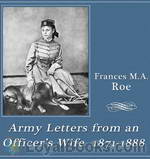 Army Letters from an Officer's Wife, 1871-1888
Army Letters from an Officer's Wife, 1871-1888
"There appeared from the bushes in front of me, and right in the path, two immense gray wolves . . . Rollo saw them and stopped instantly, giving deep sighs, preparing to snort, I knew . . . To give myself courage, I talked to the horse, slowly turning him around . . . when out of the bushes in front of us, there came a third wolf! The situation was not pleasant and without stopping to think, I said ‘Rollo, we must run him down - now do your best’ and taking a firm hold of the bridle, and bracing myself in the saddle, I struck the horse with my whip and gave an awful scream... | |
By: Frances Sheridan | |
|---|---|
 Memoirs of Miss Sidney Bidulph
Memoirs of Miss Sidney Bidulph
Sidney and Cecilia are best childhood friends who are forced to part for 5 years. In that interval, Sidney Bidulph - an undoubtedly good and dutiful woman - writes to her friend about everything: her marriage, her children, her other friendships and, above all, about her great love for Mr. Faulkland. In an amazing and unforgettable way, this book shows us that the road to happiness is not always clear - and that sometimes doing what seems to be right is not really the right thing to do. With Rachel's lovely reading, we see her - Sidney Bidulph - as she was meant to be, and as she really is. | |
By: Francis Archibald Bruton | |
|---|---|
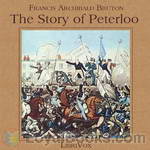 The Story of Peterloo
The Story of Peterloo
On 16th August 1819 around 60,000 people gathered at St. Peter’s Fields, Manchester, to rally for parliamentary reform. Shortly after the meeting began, a troop of Hussars and local yeomanry rode into the crowd, wielding clubs, swords and sabres, leaving 18 dead and more than 700 severely injured. In the following years, the Peterloo Massacre was the subject of several trials and inquiries. It now counts as one of the most significant events in the history of the British labour movement. Francis Archibald Bruton’s account of the day’s events, published for its centenary and based on a detailed examination of contemporary accounts, is both dispassionate and moving... | |
 Lancashire
Lancashire
The county of Lancashire in the north-west of England is best known as the engine room of the nineteenth-century Industrial Revolution. Steering clear of the industrial districts, F. A. Bruton takes the reader on an engaging tour of the county's beauty spots and lesser known landscapes. Taking the view that the charm of a district is nothing without its historical associations, Bruton packs his account with historical detail and literary references to, among others, Leland, Wordsworth, Ruskin, Arnold, and Mrs. Carlyle. (Introduction by Phil Benson) | |
 Three Accounts of Peterloo
Three Accounts of Peterloo
A companion volume to F.A. Bruton's 'The Story of Peterloo', the full title of this short collection is 'Three Accounts of Peterloo by Eyewitnesses, Bishop Stanley, Lord Hylton, John Benjamin Smith with Bishop Stanley's Evidence at the Trial'. The three contemporary accounts, each with a short introduction by the editor, give different perspectives on the events of 16 August 1819, when a troop of Hussars accompanied by the local Yeomanry rode into a peaceful reform rally at St. Peter's Fields, Manchester, leaving 18 dead and more than 700 injured. | |
By: Francis B. (Francis Bail) Pearson (1853-) | |
|---|---|
 Reveries of a Schoolmaster
Reveries of a Schoolmaster
| |
 The Reconstructed School
The Reconstructed School
| |
 The Vitalized School
The Vitalized School
| |
By: Francis Bacon (1561-1626) | |
|---|---|
 The Essays of Francis Bacon
The Essays of Francis Bacon
Among the many ideas explored in this book are beauty, gardens, honor and reputation, cunning, nobility, friendship and many others. Authored by the man who is credited with having invented the essay form in English, The Essays of Francis Bacon was written over an extended period, ranging from the mid sixteenth century. They were compiled in a single edition in 1597 and later re-written, enlarged and added to in other editions in 1612 and 1625. However, their compelling and insightful quality still appears fresh and appealing to modern day readers... | |
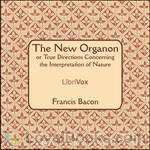 The New Organon Or True Directions Concerning The Interpretation of Nature
The New Organon Or True Directions Concerning The Interpretation of Nature
The Novum Organum is a philosophical work by Francis Bacon published in 1620. The title translates as “new instrument”. This is a reference to Aristotle’s work Organon, which was his treatise on logic and syllogism. In Novum Organum, Bacon details a new system of logic he believes to be superior to the old ways of syllogism. For Bacon, finding the essence of a thing was a simple process of reduction, and the use of inductive reasoning . . . This work was critical in the historical development of the scientific method. | |
 The New Atlantis
The New Atlantis
In 1623, Francis Bacon expressed his aspirations and ideas in New Atlantis. Released in 1627, this was his creation of an ideal land where people were kind, knowledgeable, and civic-minded. Part of this new land was his perfect college, a vision for our modern research universities. Islands he had visited may have served as models for his ideas. | |
By: Francis Bond Head (1793-1875) | |
|---|---|
 Rough Notes Taken During Some Rapid Journeys Across the Pampas and Among the Andes
Rough Notes Taken During Some Rapid Journeys Across the Pampas and Among the Andes
“Galloped on with no stopping, but merely to change horses until five o’clock in the evening—very tired indeed, but . . . saw fresh horses in the corral, and resolved to push on. At half-past seven, after having galloped a hundred and fifty-three miles, and been fourteen hours and a half on horseback got to the post—quite exhausted—I could scarcely speak . . . an hour before daylight was awakened by the Gaucho, got up, had some mate, mounted my horse, and as I galloped along felt pleased that the sun should find me at my work... | |
By: Francis Cassilly (1860-1938) | |
|---|---|
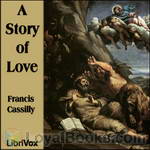 A Story of Love
A Story of Love
This is not a love story, but the story of love, a love which every man and woman was created to experience, a love so intense and fulfilling that it scarcely seems possible to grasp, yet one that is offered to every human person who opens his heart and mind to its beauty and wonder. This is a love that so many of our forefathers have found and even now enjoy, but which so many of us still seek. The American Jesuit Father Cassilly opens our eyes to this love, the unifying and personal love between the human person and his Creator... | |
By: Francis Edward Tourscher (1870-1939) | |
|---|---|
 Work Of The Sisters During The Epidemic Of Influenza October, 1918
Work Of The Sisters During The Epidemic Of Influenza October, 1918
In 1918 over 2,000 Roman Catholic nuns left their convents in the Philadelphia area to nurse the sick and dying of the influenza epidemic. Twenty-three of the sisters died because of their ministrations. This is an account of their heroic work published in the American Catholic Historical Society Of Philadelphia, 1919. “Gathered and arranged from reports of personal experiences of the sisters and contributed by request of the compiler.” The compiler/author was an academic/priest at Villanova University in Pennsylvania. Since there are no chapter headings, this recording uses the section headings of the book. - Summary by David Wales and book's subtitle | |
By: Francis Ellingwood Abbot (1836-1903) | |
|---|---|
 A Public Appeal for Redress to the Corporation and Overseers of Harvard University Professor Royce's Libel
A Public Appeal for Redress to the Corporation and Overseers of Harvard University Professor Royce's Libel
| |
By: Francis J. Finn, S.J. (1859-1928) | |
|---|---|
 Ada Merton
Ada Merton
The conversion of an indifferent father and mother, through the death of an only child, is well told in another story by Fr Finn, S.J. entitled Ada Merton. | |
By: Francis Key Howard (1826-1872) | |
|---|---|
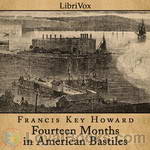 Fourteen Months in American Bastiles
Fourteen Months in American Bastiles
Francis Key Howard recounts in this book his life as a political prisoner of the United States. He points out that he was held captive at the same location where his grandfather was inspired to write the national anthem about the "land of the free," which makes a very stunning contrast. The sufferings that were imposed on him by the Union forces had the effect of solidifying his determination to resist unjust governmental dictates. (Introduction by Katie Riley) | |
By: Francis Leggett | |
|---|---|
 Tea Leaves
Tea Leaves
| |
By: Francis P. Obrien | |
|---|---|
 The High School Failures A Study of the School Records of Pupils Failing in Academic or Commercial High School Subjects
The High School Failures A Study of the School Records of Pupils Failing in Academic or Commercial High School Subjects
| |
By: Francis Parkman | |
|---|---|
 Pioneers of France in the New World
Pioneers of France in the New World
Francis Parkman (1823-1893) has been hailed as one of America’s first great historians and as a master of narrative history. Numerous translations have spread the books around the world. The American writer and literary critic Edmund Wilson (1895-1972) in his book O Canada (1965), described Parkman’s France and England in North America in these terms: The clarity, the momentum and the color of the first volumes of Parkman’s narrative are among the most brilliant achievements of the writing of history as an art... | |
 The Jesuits in North America in the 17th Century
The Jesuits in North America in the 17th Century
Parkman has been hailed as one of America's first great historians and as a master of narrative history. Numerous translations have spread the books around the world. The American writer and literary critic Edmund Wilson (1895-1972) in his book "O Canada" (1965), described Parkman’s France and England in North America in these terms: "The clarity, the momentum and the color of the first volumes of Parkman’s narrative are among the most brilliant achievements of the writing of history as an art... | |
By: Francis Pharcellus Church (1839-1906) | |
|---|---|
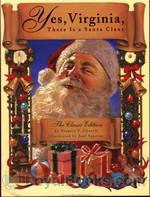 Yes, Virginia, There Is A Santa Claus
Yes, Virginia, There Is A Santa Claus
“Is There A Santa Claus?” was the headline that appeared over an editorial in the September 21, 1897 edition of the New York Sun. The editorial, which included the response of “Yes, Virginia, There is a Santa Claus,” has become an indelible part of popular Christmas lore in the United States. | |
By: Francis Rolt-Wheeler | |
|---|---|
 The Boy With the U.S. Census
The Boy With the U.S. Census
THE BOY WITH THE U.S. CENSUSBY FRANCIS ROLT-WHEELERPREFACELife in America to-day is adventurous and thrilling to the core. Border warfare of the most primitive type still is waged in mountain fastnesses, the darkest pages in the annals of crime now are being written, piracy has but changed its scene of operations from the sea to the land, smugglers ply a busy trade, and from their factory prisons a hundred thousand children cry aloud for rescue. The flame of Crusade sweeps over the land and the call for volunteers is abroad... | |
 Science - History of the Universe Vol. 7: Anthropology & Medicine
Science - History of the Universe Vol. 7: Anthropology & Medicine
Multi-volume work on science edited by Francis Rolt-Wheeler. The seventh volume is on Anthropology written by the editor himself and on Medicine written by Theodore H. Allen. An introduction to the Anthropology section was written by Frederick Starr. The section on Anthropology discusses its role in science, explains different human races, delved into prehistoric archaeology and further into the development of culture. The section on Medicine goes through medical knowledge from the ancients, Greeks, Romans, Arabians and all the way to the 17th to 19th century. It examined how these different eras affected the progress of medicine. - Summary by Sienna | |
 Science - History of the Universe Vol. 8: Mathematics
Science - History of the Universe Vol. 8: Mathematics
Multi-volume work on science edited by Francis Rolt-Wheeler. The eighth volume is on Pure Mathematics written by L. Leland Locke and on Mathematical Applications written by Dr. Franz Bellinger. An introduction was written by Professor Cassius J. Keyser with a special section on the Foundation of Mathematics. The Pure Mathematics section discusses numbers - its conception and calculations, as well as different areas of mathematics - algebra, geometry, trigonometry. The last section goes into the different applications of mathematics. - Summary by Sienna | |
By: Francis Wellman (1854-1942) | |
|---|---|
 Art of Cross-Examination
Art of Cross-Examination
A classic text on cross-examination of witnesses, including many examples of techniques used in celebrated cases by such notable attorneys as Abraham Lincoln and future Supreme Court Justice Benjamin Cardozo. Wellman sprinkles the text liberally with background facts and explanations of the cases and just plain gossip about the participants. Useful listening for anyone who occasionally feels the need to dig a bit deeper for the truth in any conversation. - Summary by Joanne Turner | |